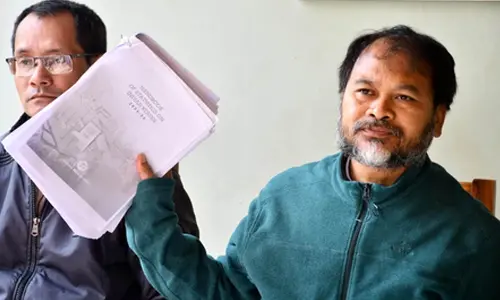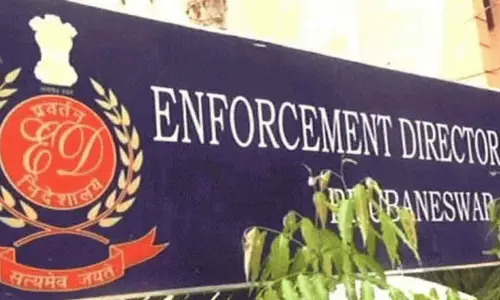Low-income nations walk straight into Dragon's debt-trap

Low-income nations walk straight into Dragon’s debt-trap
In late 2013, under President Xi Jinping, Beijing renewed its commitment to financing major infrastructure projects in other countries by announcing the Belt and Road Initiative (BRI).
In late 2013, under President Xi Jinping, Beijing renewed its commitment to financing major infrastructure projects in other countries by announcing the Belt and Road Initiative (BRI).
A close scrutiny of Chinese policies tells us that its foreign investment policies are meant to achieve multiple goals. It has cleverly woven its expansionist policies into the BRI project. It talks of improving agriculture, education, increasing employment opportunities, expanding medicare etc., but all these are only entrapments to make weaker countries fall for the bait.
Heard the saying like a moth to a flame to describe a fatal attraction? But why are moths attracted to flame? Why are they so much attracted to it that they fly straight into it? Entomologists have an idea, perhaps.
One idea is that moths aren't so much attracted to the light of a flame or other bright light as they are disoriented by it. Like many flying insects, moths have developed a transverse orientation – the habit of receiving light at a fixed part of the eye. "As long as the moth flies more or less in a straight line, this visual pattern remains unchanged. But, when the light source is a nearby candle, for example, then the angle at which the light strikes the moth's eye quickly changes while the moth holds to a straight-line course. The moth tries to do what it has evolved to do under the light of the sun or moon – that is, maintain a constant angle to the source. As it does so, it spirals in toward the light and might end up drawn into the flame," scientists explain.
AidData, an international research lab based at William & Mary's Global Research Institute, has released a trove of new findings about China's secretive overseas development finance programme. The analysis, based on a massive new dataset four years in the making, includes a special focus on China's Belt and Road Initiative (BRI).
The AidData report, 'Banking on the Belt and Road,' offers a bird's-eye view of China's geo-economic strategy before and after the introduction of the BRI in 2013. It details how spending patterns, debt levels, and project implementation problems have changed over time, leveraging insights from a uniquely granular dataset that captures 13,427 projects across 165 countries worth $843 billion. These projects were financed by more than 300 Chinese government institutions and state-owned entities.
"China has quickly established itself as the financier of first resort for many low-income and middle-income countries, but its international lending and grant-giving activities remain shrouded in secrecy," say experts who worked on the report. Beijing's reluctance to disclose detailed information about its overseas development finance portfolio has made it difficult for low-income and middle-income countries to objectively weigh the costs and benefits of participating in the BRI.
China is now outspending the US and other major powers on a more than 2-to-1 basis. In an average year during the BRI era, China spent $85 billion on their overseas development programme as compared to the US' $37 billion. Banking on the BRI demonstrates that Beijing has used debt rather than aid to establish a dominant position in the international development finance market. Since the BRI was introduced in 2013, China has maintained a 31-to-1 ratio of loans to grants.
The report finds that as China has financed bigger projects and taken on higher levels of credit risk, it has also put in place stronger repayment safeguards. About 31% of the country's overseas lending portfolio benefited from credit insurance, a pledge of collateral, or a third-party repayment guarantee during the early 2000s, but this figure now stands at nearly 60%. When the stakes are especially high, collateralisation is Beijing's "go-to" risk mitigation tool: In all, 40 of the 50 largest loans from Chinese state-owned creditors to overseas borrowers are collateralised.
Another key finding is that Beijing's lending to low-income and middle-income countries is provided on less generous terms than loans from OECD-DAC (the Development Assistance Committee of the Organization for Economic Cooperation and Development) and multilateral creditors. A typical loan from China has a 4.2% interest rate and a repayment period of less than 10 years. By comparison, a typical loan from an OECD-DAC lender like Germany, France or Japan carries a 1.1% interest rate and a repayment period of 28 years.
Banking on the Belt and Road also chronicles the rise of "hidden debt" and the fall of sovereign debt during the BRI era. These debts, for the most part, do not appear on their government balance sheets. However, most of them benefit from explicit or implicit forms of host government liability protection, which has blurred the distinction between private and public debt and created major public financial management challenges for developing countries.
The report found that 42 countries now have levels of public debt exposure to China in excess of 10% of GDP. They also find that these debts are systematically underreported to the World Bank's Debtor Reporting System (DRS) because, in many cases, central government institutions in low-income and middle-income countries are simply not the primary borrowers responsible for repayment.
According to the report, "these unreported debts are worth approximately $385 billion and the hidden debt problem is getting worse over time." They found that average annual underreporting of repayment liabilities to China was $13 billion during the pre-BRI era, but $40 billion during the BRI era.
It is explained that "the challenge of managing these hidden debts is less about governments knowing that they will need to service undisclosed debts to China with known monetary values than it is about governments not knowing the monetary value of debts to China that they may or may not have to service in the future."
Here is a twist to the story too: 35% of the BRI infrastructure project portfolio has encountered major implementation problems—such as corruption scandals, labour violations, environmental hazards, and public protests—but only 21% of the Chinese government's infrastructure project portfolio outside of the BRI has encountered similar problems. BRI infrastructure projects are also taking substantially longer to implement than Chinese government-financed infrastructure projects undertaken outside of the BRI, and Beijing has witnessed more project suspensions and cancellations during the BRI era than it did during the pre-BRI era.














